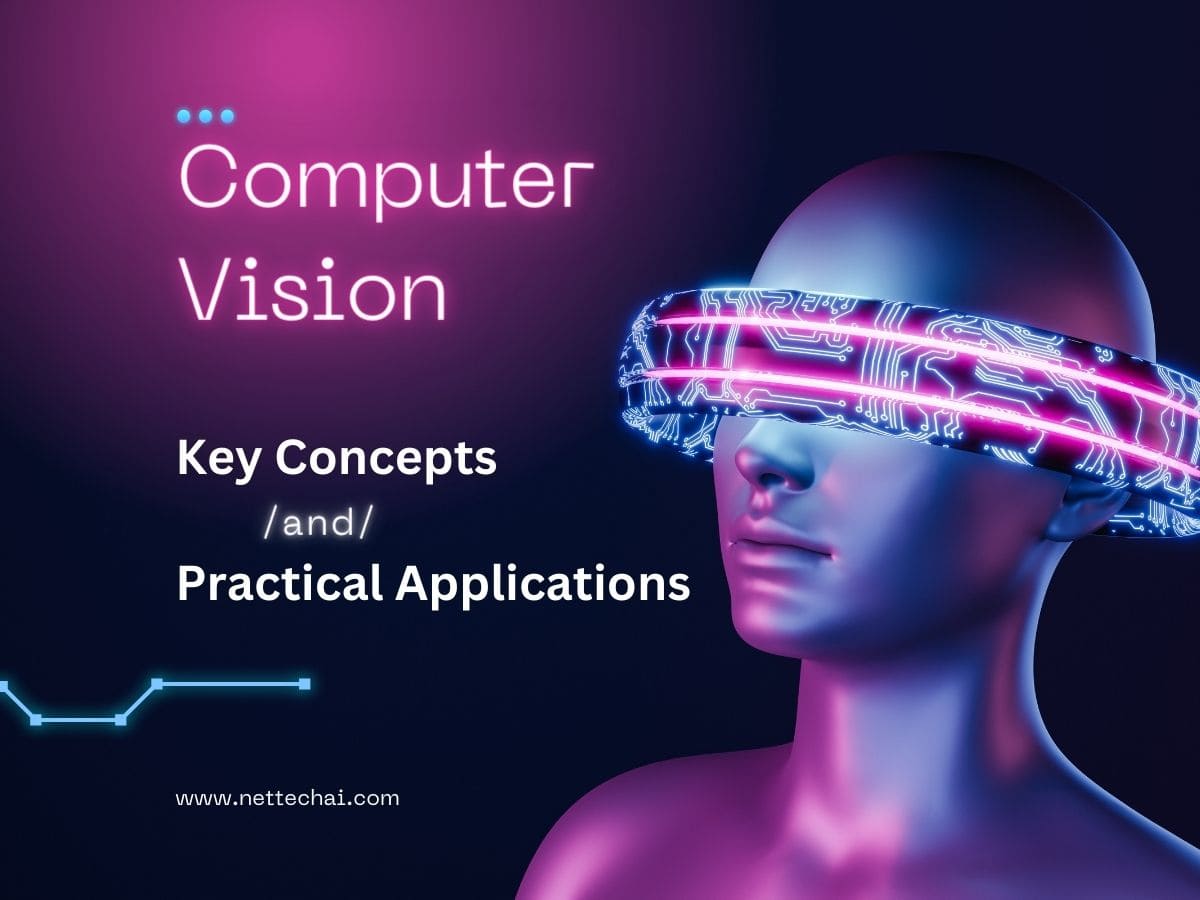OverThe marvels of artificial intelligence (AI) have transcended beyond mere text and numbers to encompass the visual realm, giving rise to the remarkable field of Computer Vision. This article embarks on a comprehensive journey through the domain of Computer Vision, unraveling its essence, delving into its key concepts, exploring its applications, and addressing the ethical and privacy considerations that accompany its transformative power.
Introduction to Computer Vision (CV)
Computer Vision OR Machine vision is an AI subfield dedicated to enabling machines to interpret and comprehend visual information from the world. The fundamental goal is to equip computers with the ability to understand images and videos as humans do, processing visual input and extracting meaningful insights. This intersection of AI and visual perception opens up new avenues for technology to interact with and understand our visual environment.
How AI Systems Perceive and Interpret Visuals
AI systems employ intricate algorithms to process visual data. These algorithms break down images and videos into elements like pixels and patterns, which are then analyzed to recognize objects, infer context, and draw conclusions. This technology’s potential is particularly evident in sectors where visual data holds immense value, such as healthcare, transportation, and security.
Key Concepts in Computer Vision
- Involves locating and identifying objects within images or videos. This process is foundational in enabling machines to understand their surroundings and interact with their environment.
- Image Segmentation Takes this a step further by categorizing individual pixels within an image, enabling precise identification of objects and their boundaries.
- Facial Recognition A specialized form of object detection, has gained prominence in various applications, from unlocking smartphones to enhancing security systems.
Impact of Computer Vision on Deep learning
The advent of deep learning has revolutionized Machine Vision’s accuracy. Deep learning models, particularly convolutional neural networks (CNNs), have demonstrated exceptional capabilities in image analysis. These models learn hierarchical representations of images, enabling them to recognize complex patterns and objects with unprecedented accuracy.
Practical Applications Of Computer Vision
Machine Vision’s applications span a diverse range of fields, driving innovation and progress.
Medical image analysis
Aids in diagnosing diseases and identifying anomalies from medical images, accelerating the diagnostic process and improving patient care.
Rely on Machine Vision for tasks like lane detection, object recognition, and pedestrian tracking, enabling vehicles to navigate safely in complex environments.
Surveillance systems
Leverage Computer Vision for real-time monitoring and threat detection, enhancing public safety and security. Furthermore.
Industrial automation
Employs Computer Vision to optimize manufacturing processes, ensuring quality control and operational efficiency.
Ethical and Privacy Considerations
The advancement of Computer Vision technology introduces ethical and privacy concerns that demand careful consideration.
Privacy Concerns in Facial Recognition
Facial recognition technology, while powerful, raises questions about privacy and consent. The ability to identify individuals from images and videos has implications for personal privacy, surveillance, and data security. Striking a balance between innovation and individual rights is pivotal.
Ensuring Fairness and Accountability
The potential for biases in Computer Vision systems poses challenges to fairness and accountability. If training data is biased, AI models can inherit those biases, leading to inaccurate or unfair outcomes. Ensuring diverse and representative training data is essential to mitigate these biases and ensure equitable outcomes.
Ethical and Privacy Considerations
The ethical implications of Computer Vision underscore the importance of responsible development and deployment.
Addressing Bias
Developers must be vigilant in addressing bias in Computer Vision systems. This entails curating diverse and representative training data, employing techniques like data augmentation, and continuously monitoring and adjusting models to minimize biases.
Transparency and Accountability
Transparency is paramount in the development of Machine Vision systems. Users should be aware of when they are interacting with AI technology, and companies should be accountable for the behavior of their systems. Clear guidelines and ethical frameworks are crucial to instill user trust.
Looking Ahead
As Computer Vision continues to evolve, its trajectory promises to redefine how we perceive and interact with the visual world.
Visual Understanding Beyond Images
Computer Vision is expanding beyond images and videos to understand context, scenes, and even emotions. Systems are being developed to comprehend the sentiment and emotional tone of images, opening doors to applications in market research, content creation, and more.
Human-Machine Collaboration
The future holds promise for seamless human-machine collaboration through Machine Vision. In healthcare, for instance, Machine Vision assists doctors in analyzing medical images, leading to more accurate diagnoses. Moreover in creative fields, AI-powered visual content generation becomes a reality, augmenting human creativity.
In conclusion, machine Vision is a monumental leap in the realm of AI, enabling machines to decode the visual world that surrounds us. Its applications span healthcare, transportation, security, and industry, reshaping industries and enhancing human capabilities. However, ethical considerations must guide its development to ensure fairness, privacy, and accountability. As Computer Vision advances, its potential to revolutionize diverse sectors while safeguarding individual rights is undeniable. Through responsible innovation, Computer Vision stands poised to amplify our perception, transforming pixels into meaningful insights.






